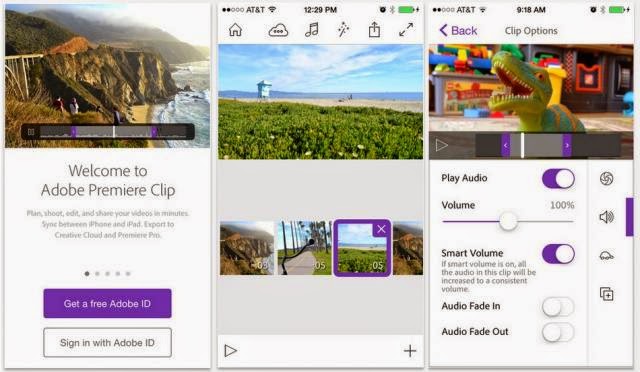
- ADOBE PREMIERE CLIP TABLET HOW TO
- ADOBE PREMIERE CLIP TABLET PRO
- ADOBE PREMIERE CLIP TABLET PROFESSIONAL
To do this, you’ll need to click on the “Output Name” which appears in default as the name of your sequence in blue text (which you can click on). If you’d like to research some information into what settings you might need to include for various upload platforms, here are some recommended settings to keep in mind:Īlso, before you export you’ll want to make sure you’ve properly named your export file as well as chosen your desired location. You can also choose a video format that fits your size and quality standards. At the very bottom of the right panel you’ll also see your Estimated File Size based on your current settings (keep this in mind if you need to keep your export under a certain size). You can also individually customize just about all parts of your video export including: Effects, Video, Audio, Multiplexer, Captions and Publish controls. But that’s only if you were working with a sequence which you knew was a good fit for your footage and upload needs. Don’t just click through yet! These export options are highly customizable and might need to be changed depending on what you’d like to do with your video once it’s exported.įor many, the simplest and safest option might be to check the “Match Sequence Settings” box at the top right. Once you click “Media” an “Export Settings” box will be brought up. (You can even go further and click (Control + `) to make the screen completely full.)
ADOBE PREMIERE CLIP TABLET PRO
If you’d like to watch your video on a bigger screen than the default Premiere Pro setup, simply hover your mouse over the program screen on the top right and click the (`) key to make the screen larger. I’d suggest at the bare minimum that you should attentively watch your video all the through at least twice to make sure there are no glaring mistakes. Yes, you want to export now! But please, please, please double check your work and make sure everything is exactly how you want it. Make sure your project is done and ready to export!

ADOBE PREMIERE CLIP TABLET PROFESSIONAL
Order professional captions and subtitles for your videos.ġ.

So, before you click around and try to find that big red “export” button in Premiere Pro, here are the four steps that you’ll need to take to properly export your video project before you go and share it with the world.Ĩ5% of online videos are watched without sound.
ADOBE PREMIERE CLIP TABLET HOW TO
In this short tutorial, we can teach you everything you need to know not just about how to export – but also some quick tips for the best ways to export. However, for those who might just be starting off, simply finding the proper way to export in Adobe Premiere Pro can be tricky if you haven’t done it before. With this tool, you can easily cut clips at any point you wish.Add Captions & Subtitles to Adobe Premiere Pro It won’t cut anything from the clip, it’ll just speed or slow the frame rate. You can click and drag from the In or Out points to use this tool. Under this tool there is also Rate Stretch if you need to speed up or slow down an entire clip. You can use this to trim the In and Out points of your clips, and you can use the Rolling Edit tool to simultaneously edit one clip’s Out point and another’s In point, in order to close gaps. By doing this you can use the Track Select Forward tool, which can move an entire track in your timeline forward, or the Track Select Backward tool, which does the opposite. This means that by clicking and holding down on the icon you can access the other tools related to it. You may notice in the bottom-right corner of the icon there is a small triangle. This is the next icon under the Selection Tool, denoted by a box and arrow. In this article the Editing workspace will be used.

You can change how you want your workspace to look by moving each panel, or choosing Window > Workspaces in the top bar and selecting one of the pre-created ones. Inserting Your Video and AudioĪfter setting your project options, you will be brought to your main workspace. The Capture Format section is not important unless you are directly capturing video to Adobe Premiere, in which case you’d choose whether you’re shooting in Digital Video or High Definition Video. The Audio display option really comes down to how precisely you want to edit your audio files, but the Audio Samples option is fine unless you need to edit audio down to the millisecond. This option is recommended as it will show you how long your video comes out to and makes it easier to locate specific frames. Timecode is how the video you shot logged and saved each frame of the video. You can then choose by what metric you want your video displayed, either Timecode or Frames (you don’t need to worry about feet + frames unless you recorded with a 16mm or 35mm camera). Your available options depend on your computer’s graphics card, but Mercury Playback Engine GPU Acceleration (Open CL) is supported by most computers and recommended.

What you choose for this option determines how fast your video will be rendered and played back to you.


 0 kommentar(er)
0 kommentar(er)
